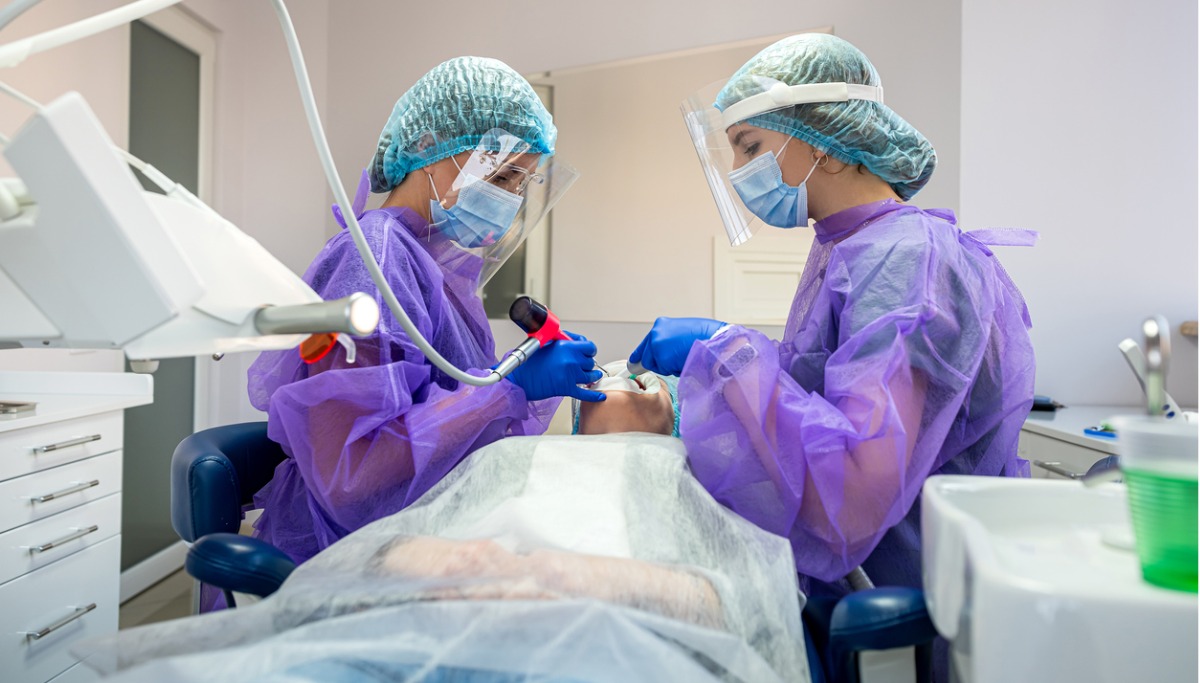Wisdom teeth removal (extraction)
Wisdom teeth removal is a tooth extraction procedure that occurs when a dentist or oral surgeon removes one or more of your third molars, which are found at the very back of your mouth.
Wisdom teeth are typically the last adult teeth to emerge and usually appear between the ages of 17 to 25 years old. Because they can cause moderate to severe oral health issues or worsen existing issues, dentists commonly recommend that they be removed. But many people never experience any problems with their wisdom teeth.
When to consider wisdom teeth removal?
The most common reasons why your wisdom teeth may need to be removed include:
- There isn’t room for them in your mouth
- They are impacted (which means they did not erupt properly)
- They make it difficult to treat other problems in adjacent teeth
- They create oral health issues for you
You may need your wisdom teeth removed if you experience any of the following symptoms near or around your wisdom teeth:
- Pain, inflammation, or swelling
- Repeated irritation or infection
- Damage to your gums or teeth due to overcrowding
- The presence of gum disease or gingivitis
- Cysts (fluid-filled sacs)
- Signs of tooth decay
- Tooth decay in adjacent teeth that is difficult to treat
Your dentist may also recommend the removal of wisdom teeth as a preventive measure before any of these symptoms appear.
When is emergency removal of wisdom teeth needed?
Wisdom teeth removal can often be scheduled ahead of time. However, certain situations may require an emergency procedure, like if impacted wisdom teeth cause severe pain or an infection.
If you think you may need your wisdom teeth removed, and need to find a dentist or oral surgeon near you, the Delta Dental dentist finder tool can help.
Does everyone need to have their wisdom teeth removed? What are the potential complications?
Wisdom teeth do not always need to be removed, and some people have healthy wisdom teeth that never cause any issue.
That said, it is common for many people to have one or more of their wisdom teeth removed. This makes it easier to care for your oral health and helps you avoid complications like gum disease, cavities, tooth decay, bone loss, and jaw damage, which can happen when wisdom teeth do not erupt properly or they become impacted.
Speak with your dentist to determine if your wisdom teeth require removal.
At what age are wisdom teeth typically removed?
Wisdom teeth can be removed at any age after they develop, but the procedure is most common between the ages of 17 and 22. Removing them at this age is often less complicated and requires less recovery because the roots may not have fully formed yet.
How much does wisdom teeth removal cost?
The cost for the procedure can depend on a few factors, such as whether you have dental benefits, how many wisdom teeth are being removed, if they are impacted, and their position in the jaw. For more details, you can:
- Review the average cost of removing wisdom teeth
- Use our cost estimator tool to estimate pricing for removal in your local area
How can I prepare for wisdom teeth removal?
Your dentist or oral surgeon will review the procedure with you beforehand, so you feel comfortable and know how to prepare. You will discuss:
- If you have any other health conditions
- Whether you take any prescription drugs or medications on a regular basis
- The type of anesthesia you prefer
- Instructions for you to follow before and after surgery
- Any questions you have about the surgery
How long does wisdom teeth removal surgery take?
Surgery to remove wisdom teeth varies, but it typically takes about an hour. There are a few steps to the procedure:
- Anesthesia: Your dentist or oral surgeon will administer anesthesia, so you do not feel pain during the surgery. The anesthesia may be local, which makes your teeth and surrounding tissues numb but keeps you awake and aware during the procedure, or you may be sedated under general anesthesia.
- Surgery: During the surgery, your dentist or oral surgeon will make an incision in your gums and remove the tooth. If the tooth is impacted, some surrounding bone may also need to be removed.
- Cleanup and stitching: After removing the tooth, the site of the tooth is cleaned to help it heal faster. In some instances, stitches are used. Gauze is places to stop any bleeding and you can remove it once the bleeding stops.
What should I know about wisdom teeth removal recovery and timeline?
The first 2 to 3 days of recovery from wisdom teeth removal are typically the most uncomfortable, and it can take up to two weeks to fully heal. What you eat and drink in the days after surgery can play a role in your recovery. Your dentist will provide post-operative eating instructions to minimize any discomfort and irritation.
When should I see my dentist after wisdom teeth removal?
Always visit your dentist for any recommended follow-up appointments. You should also seek care immediately if you notice the following symptoms:
- Severe pain, which can be a sign of dry socket
- A fever of 102 Fahrenheit or above
- Difficulty breathing or swallowing
- Swelling that continues to worsen over time
- Pus (milky discharge) coming from your surgical area, which is a sign of infection
If you do not have any stitches, and do not experience complications, you may not need a follow-up appointment.
Be wise about your wisdom teeth
Wisdom teeth removal is a common procedure and an effective way to reduce your risk for many oral health issues, from cavities and tooth decay to bone loss and gum disease.








